FALL 2019 | WEEK 7
Different Approaches to Sustainability
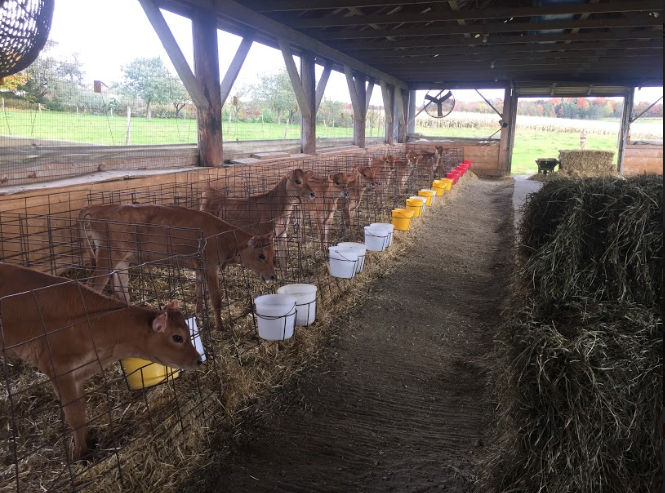
By Chris Dussault
This week the Field Semester class split its time between two different farms. One is a certified organic vegetable farm, the other a conventional dairy farm. In a sense, all farms are about sustainability in that all farmers aspire to run operations that are economically viable. No farmer wants to allow nutrient rich runoff to choke our waterways. No farmer wants to spend more on fertilizer, seeds, or labor than they need. The choices that a given farmer makes and the practices that a farmer utilizes will differ from one operation to the next, but they all need to make the most of their resources. This is true of both organic farms and conventional farms.
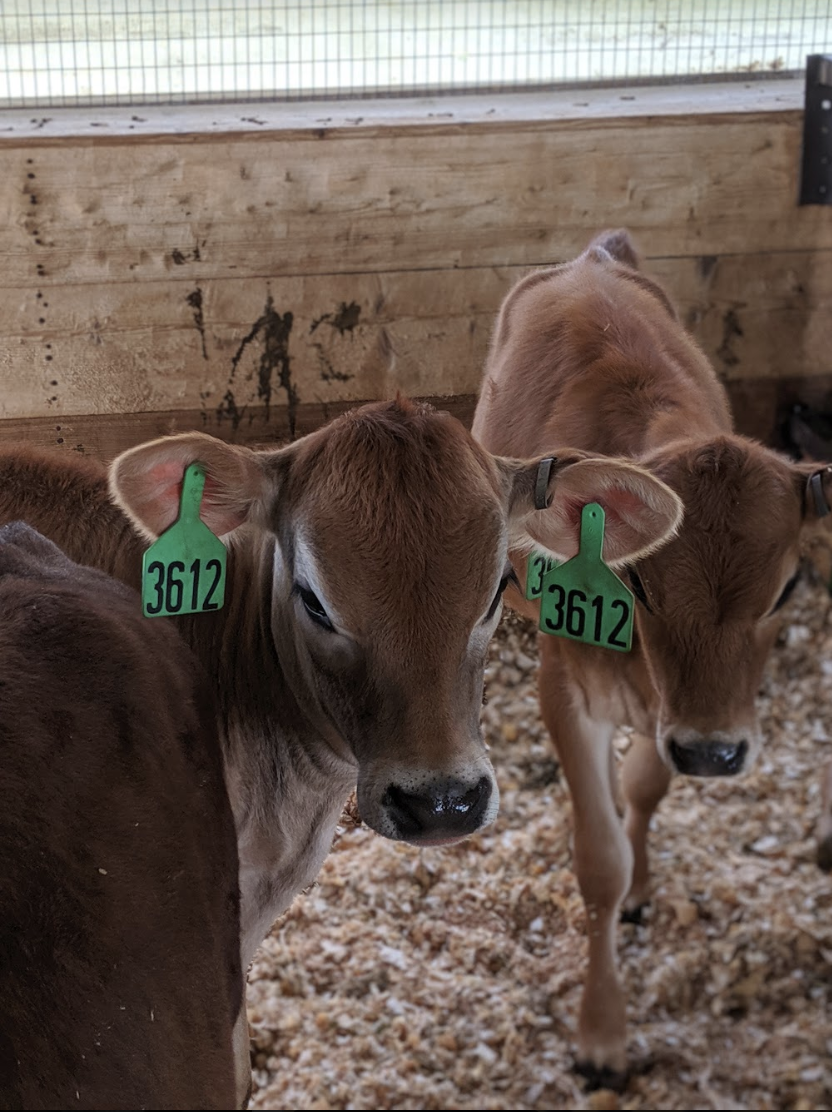
This week students got to see how two very different farms– Joe’s Brook Farm in Barnet and the Laggis Brothers Farm in East Hardwick– work to sustain themselves and their communities in a competitive and ever-changing marketplace. Both face significant challenges, and both live their values through the choices that they make. At the end of the week students got to discuss these choices and challenges.
Monday, 10/7
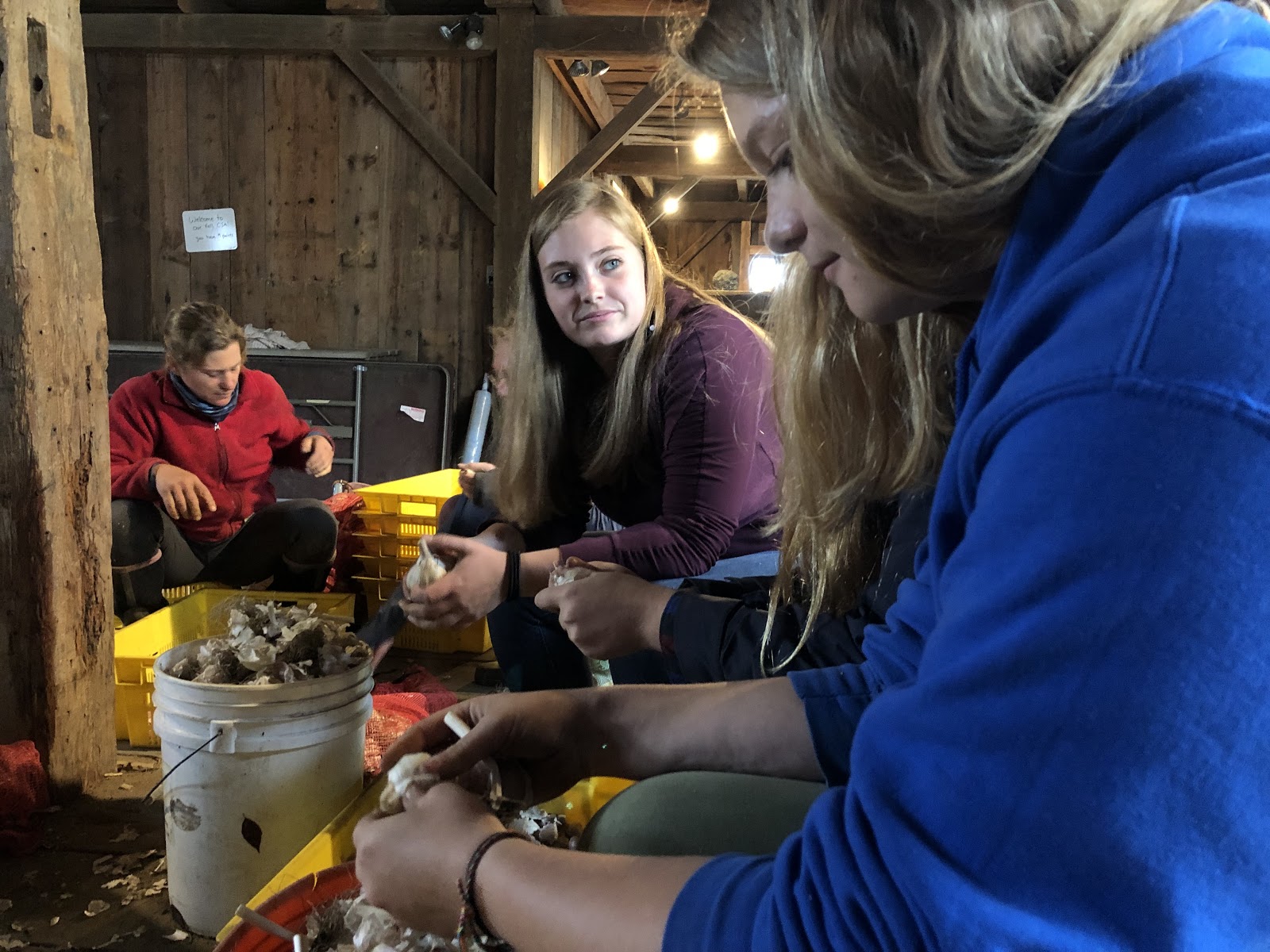
On Monday afternoon, we made our first visit to Joe’s Brook Farm in Barnet. As soon as we showed up, Mary Skousted, one of the owners of the farm, led us to a pile of bags brimming with garlic. Our task: Peel the garlic. We got right to work. We started by taking the cloves out of the garlic and placing it in the buckets. Once we finished, we went downstairs to see where they put all the carrots that we would be picking on Tuesday and Wednesday. It was a great introduction to work on a farm!
Tuesday, 10/8
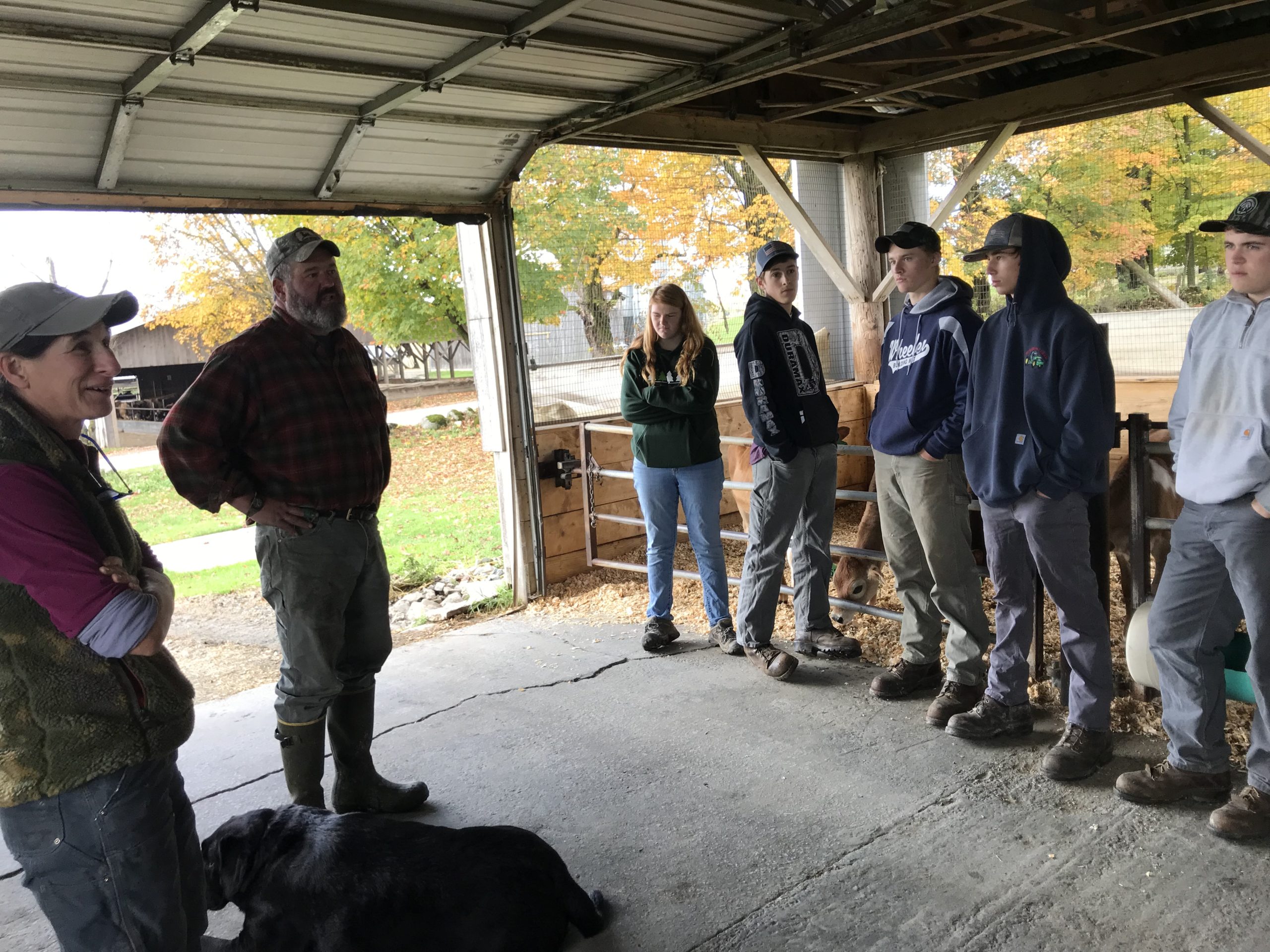
On Tuesday morning, the Field Semester class visited the Laggis Brothers Farm in Hardwick. The Laggis conventional dairy farm has been in operation for 36 years. They have grown in size over the years. The Laggis family has roughly 500 Jersey cows. They raise Jersey’s because their milk contains more butterfat, which gives them a bit of a premium on their price for milk. After we started our tour of the farm with Johanna Laggis, we met John Laggis in the “calf barn” John talked to us about their dairy operation, and the dairy industry as a whole. We talked about why milk prices are so low in the United States. This is due to the global milk economy. We used to export most of our milk to Europe due to quotas that limited how much milk they could produce. Europe lifted this quota 4-5 years ago, leading to an increase in European milk production and a 16-17% drop in milk exports from the US. This reduction in demand has driven prices down.
The Laggis’s also grow their own beef cows and they have a vegetable garden. They sell the beef but keep the vegetables to eat themselves. This helps them remain sustainable as they are able to reduce food costs and diversify their revenue through the sale of beef.

Our visit to the calf barn was a highlight of the trip. The calf barn is home to the baby cows that had been born in the last couple weeks. We also got to see the older calves. Twenty percent of their herd is used for beef. They try to keep the heifers pregnant so that they are providing them a cost benefit instead of costing them money. The cows get pregnant, have the calf, and then get milked for 300 days after they have given birth. After 300 days the cows get a two month break before they try to get them pregnant again.
The Laggis Farm survived when other farms failed because they have been fortunate to have had repeated generational succession. While other farms have closed because the children have moved on to greener pastures, the Laggis family has stuck to it. They are also a sustainable farm because they log in the winter, sugar in the spring, and they eat a lot of their own food that they grow.
Wednesday, 10/9
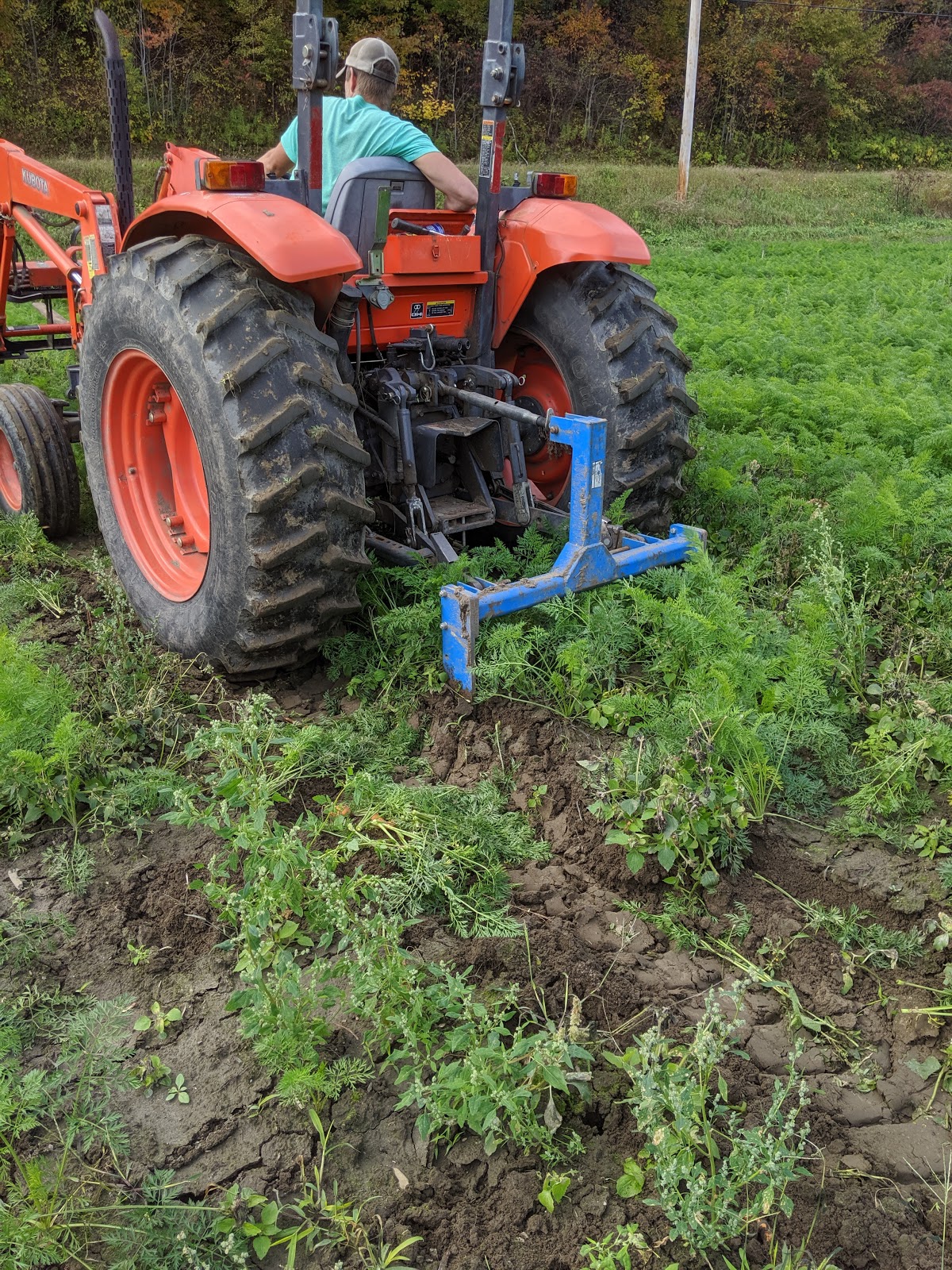
On Tuesday and Wednesday the class went back to Joe’s Brook Farm to help pick carrots. The soil that the carrots were planted in was very drainable, because a lot of sand was in it due to the field’s proximity to the Passumpsic River. In this picture farm owner Eric Skousted is using an attachment that digs the dirt up and loosens the soil so the carrots are easier to take out of the ground. We harvested 5,000 pounds of carrots to help the farm out.
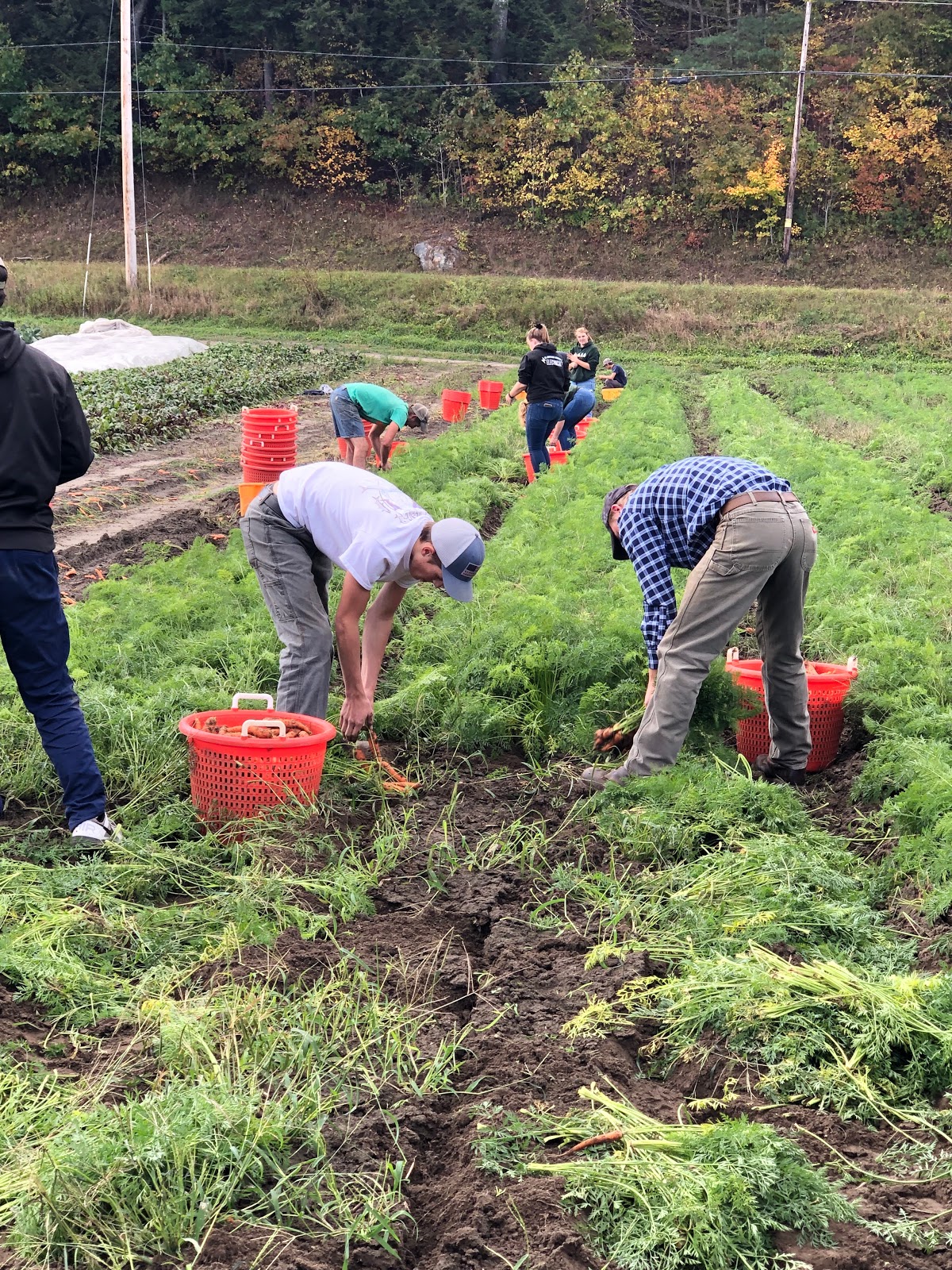
We learned a lot more than just how to harvest carrots at Joe’s Brook Farm. We learned about how they use crop rotation for soil management. We also learned that carrots are easy to grow, but they require a lot of water. Joe’s Brook irrigation system is pretty simple: They pump water straight from the Passumpsic River onto their field. We also learned that the appearance of products is important in the marketplace, as the carrots that are too short or have more than one carrot growing off it are thrown aside. During the summer they grow squash, zucchini and other greens. We saw green beans, broccoli, cabbage, and other fall vegetables growing while we were there.

